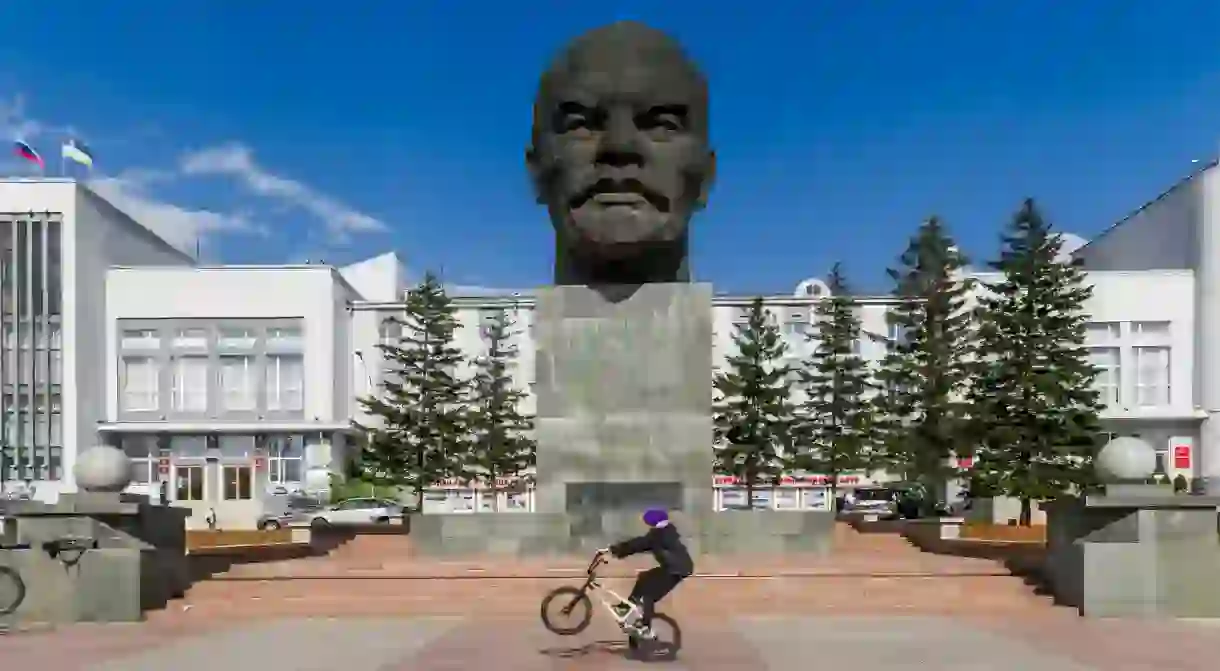The Most Beautiful Stops on the Trans-Siberian Railway

Paul Theroux once described the Trans-Siberian Railway as “like a cruise across an oceanic landscape”. It is the longest railway line in the world, connecting Moscow to Vladivostok, more than 9,288 kilometres (5,771 mi) and eight time zones. But which Siberian cities should you visit on your trip? Read Culture Trip’s recommendations below.
Did you know – Culture Trip now does bookable, small-group trips? Pick from authentic, immersive Epic Trips, compact and action-packed Mini Trips and sparkling, expansive Sailing Trips.
Yaroslavl and Volga River
Cathedral, Church, Monastery, Natural Feature, Building

Not long after you leave Moscow, you’ll pull into Yaroslavl, one of the oldest cities in Russia, founded in 1010. There are dozens of onion-domed Russian orthodox churches spread across the city. The most famous is the Monastery of the Transfiguration of the Saviour – you can’t miss the gleaming gold rooftops. One of the most beautiful sights is the Volga promenade, Europe’s longest river, dotted with cafes where you can stop for a glass of kompot, a refreshing sweet drink filled with summer berries. If you visit in winter, stop by Popovskie Bani to experience a real banya(bath house or sauna) where people massage each other with birch leaves.
Yekaterinburg and the Ural Mountains
Natural Feature, Building

Founded by Peter the Great, Yekaterinburg is known as the Great Divide of the Urals. The Ural Mountains form a natural border between Europe and Asia, so the cultural influences of European and Asian civilisations have merged together here. Until the collapse of the USSR in 1991, Yekaterinburg was a secret, closed city to foreigners, due to the presence of the USSR’s defence industry. Now Yekaterinburg is totally different in its vibe from cosmopolitan giants such as Moscow and St Petersburg. Here, you will be able to experience a more genuine Russia, with the city’s many pre-Soviet buildings being of great interest.
Krasnoyarsk
Natural Feature, Park, Building

Nearly halfway along the journey, you’ll arrive in Krasnoyarsk. It’s located on the banks of the Yenisei River, surrounded by picturesque mountains – including Mount Karaulnaya – and has a mild climate. Although, Krasnoyarsk may not have sights that would be culturally important for the whole of Russia, it is worth getting off to explore the Stolby Nature Reserve, a 472 square kilometre (182 square miles) national park that is popular with walkers and rock climbers. Embark on a day’s hiking trip along the well-maintained trails and you’ll be rewarded with eye-popping views from the top of the park’s volcanic pillars.
Lake Baikal
Natural Feature

Lake Baikal is the largest freshwater, deepest and most wildlife-rich lake on Earth. Few natural sights can surpass the beauty and grandeur of Lake Baikal, so it is no surprise that this is one of the most highly anticipated stops on the journey. Come summer, the pure, clear water will call you to dive in, while during the winter it is a playground for dog sledding and visiting thermal saunas. You may even spot seals swimming in their natural habitat. If you have time, try the delicious Baikal omulfish, roasted on a coal fire.
Ulan-Ude
Monastery, Building, Natural Feature

Russia is primarily an Orthodox Christian country, so it might surprise you to find that close to the Mongolian border is Ulan-Ude, the centre of Russian Buddhism. A highlight here is the the Ivolginsky Datsan, a Buddhist monastery located 35 km (22 mi) outside of the city on a plain with a backdrop of picturesque mountains. Datsan symbolises the re-emergence of Buddhism in this Asian part of Russia after the collapse of the Soviet Union. The Dalai Lama himself has paid a visit five times since his first tour in 1992. You can easily reach Lake Baikal’s beaches from here, too.
Ulaanbaatar
Natural Feature, Building

Mongolia can be visited via the third primary route called the Trans-Mongolian Railway. Visiting Mongolia is very popular among travellers who decide to embark on the Trans-Siberian Railway voyage because of its vast steppes, untouched deserts and nomadic, hospitable people. Ulaanbaatar is the country’s capital city, and the railway stop to disembark for a taste of Mongolia. Visit the Gandantegchinlen Monastery, spy the enormous Genghis Khan statue and use the city as a jumping-off point to meet a nomadic family in the Gorkhi-Terelj National Park.
Beijing
Building, Natural Feature

If travelling via the secondary route on Trans-Manchurian Railway, you’ll reach Beijing. Not only is it the modern capital of China, but it’s also packed with ancient sites – such as the Forbidden Palace – alongside traditional eateries and quirky attractions, such as the world’s longest outdoor escalator, shaped like a dragon. Before entering Beijing, the train passes a dozen almost identical steppes and important Chinese cities, including Harbin, Changchun and Shanhaiguan, where you will be able to see the Unesco World Heritage site, the Great Wall of China. Camera at the ready!
Vladivostok
Building, Natural Feature

Finally, you’ll pull into Vladivostok, the final destination of the Trans-Siberian Railway route. The port city will welcome you with its impressive white-washed central railway station. Vladivostok is a military port, home to the Russian Pacific Fleet, located on the western shores of the Japanese Sea. It harbours a captivating mix of different cultures: the Russian language, Japanese cars, and Asian cuisine. Explore the city before venturing beyond to the remote parts of the Primorye region, dotted with waterfalls, mountain ranges and black-sand beaches, undisturbed by tourists.













